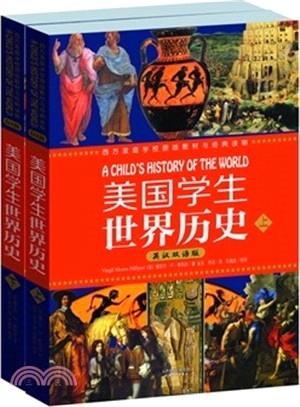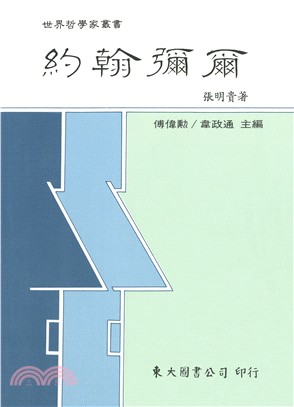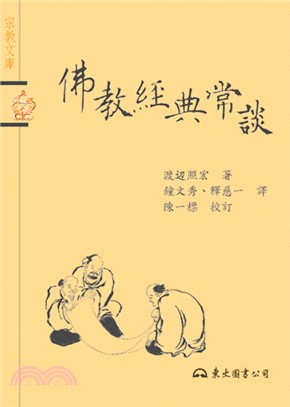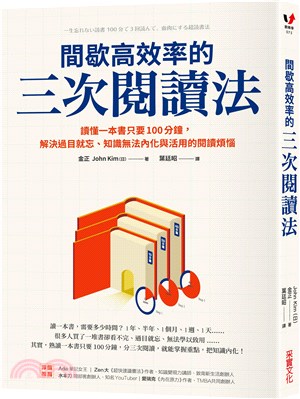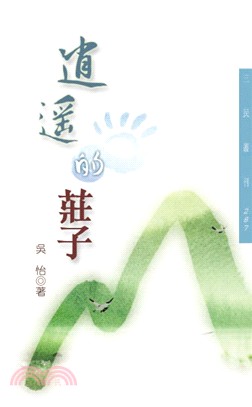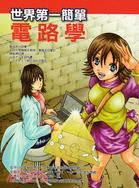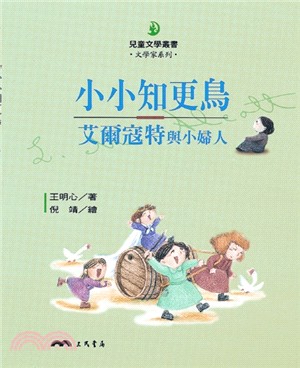美國學生世界歷史(全二冊‧英漢雙語版)(簡體書)
- 系列名:西方家庭學校經典教材與經典讀物
- ISBN13:9787201077796
- 出版社:天津人民出版社
- 作者:(美)希利爾
- 裝訂/頁數:平裝/218頁
- 規格:23.5cm*16.8cm (高/寬)
- 本數:2
- 版次:一版
- 出版日:2012/12/01
商品簡介
作者簡介
名人/編輯推薦
因此《美國學生世界歷史(套裝上下冊)(英漢雙語版)》按照時間的順序來論述題材——一個世紀接一個世紀、一個時代接一個時代地述說歷史事件,而不是按照各個國家的順序。一個國家的歷史敘述還沒有結束就停下來,又開始了另一個國家的歷史敘述,就像小說里讓不同的情節同步展開一樣。這樣做和編撰《美國學生世界歷史(套裝上下冊)(英漢雙語版)》的目的是一致的——就是讓小學生們看到各個時代連續的全景圖,而不是把希臘歷史從頭到尾說一遍,然后從時間上返回來,再講述羅馬歷史,這樣不斷繼續下去。《美國學生世界歷史(套裝上下冊)(英漢雙語版)》的宗旨就是要勾勒出整個歷史畫面的輪廓,而詳情則有待孩子們在以后的學習中逐漸補充,就像畫家先粗略勾勒出草圖,然后再補充細節。要把歷史知識有條理地歸類,需要這樣一幅輪廓圖,就像任何一個運作平穩有序的辦公室,需要一個能將各類文件歸檔的系統。
《美國學生世界歷史(套裝上下冊)(英漢雙語版)》的時間階梯是要讓孩子們在直觀上了解時間的長度和世界歷史發展的階段。每一段階梯代表一千年,每一個臺階代表一百年,也就是一個世紀。如果你有一面空墻,不管是在游戲室、閣樓還是谷倉里,你可以將“時間階梯”放大畫在墻上,從地面一直畫到手夠得著的高度。如果再精心配上有人物和歷史事件的圖片或繪畫,那就很有特色,更吸引人了。如果這面墻正對著孩子的床,那就更好了。因為早晨或其他時間孩子醒來躺在床上時,他就可以不去想象墻紙上稀奇古怪的圖案,時間階梯里擠滿的歷史事件足以讓他構想出各種情景。無論怎樣,在學習每一個歷史事件的時候,孩子就應當不斷參考這樣一個時間階梯或時間表,久而久之,過去時代的印象就會留在他腦海中。開始,孩子們領會不到歷史年表上數字表達的時間長度或各個時期的相應順序,會將公元前2500年、公元前25000年和公元前2500萬年混為一談。孩子們只有不斷地將歷史時期歸入到時間階梯或時間表里相應位置。這些時期才能在他腦子里形成具體的印象。如果一個孩子說公元776000年舉辦了第一屆奧運會,或者意大利位于雅典,亞伯拉罕是特洛伊戰爭的英雄,你可能會覺得好笑,但千萬不要感到驚訝。
序
So far as I knew 1492 was the beginning of the world. Any events or characters before that time, reference to which I encountered by any chance, were put down in my mind in the same category with fairy-tales. Christ and His times, of which I heard only in Sunday-school, were to me mere fiction without reality. They were not mentioned in any history that I knew and therefore, so I thought, must belong not to a realm in time and space, but to a spiritual realm.
To give an American child only American History is as provincial as to teach a Texas child only Texas History. Patriotism is usually given as the reason for such history teaching. It only promotes a narrow-mindedness and an absurd conceit, based on utter ignorance of any other peoples and any other times—an intolerant egotism without foundation in fact. Since World War I, it has become increasingly more and more important that American children should have a knowledge of other countries and other peoples in order that their attitude may be intelligent and unprejudiced.
As young as nine years of age, a child is eagerly inquisitive as to what has taken place in the ages past and readily grasps a concept of World History. Therefore, for many years Calvert School nine-year-old pupils have been taught World History in spite of academic and parental skepticism and antagonism.
But I have watched the gradual drift toward adoption of this plan of history teaching, and with it an ever-increasing demand for a text-book of general history for young children. I have found, however, that all existing text-books have to be largely abridged and also supplemented by a running explanation and comment, to make them intelligible to the young child.
The recent momentous studies into the native intelligence of children show us what the average child at different ages can understand and what he cannot understand—what dates, figures of speech, vocabulary, generalities, and abstractions he can comprehend and what he cannot comprehend—and in the future all textbooks will have to be written with constant regard for these intelligence norms. Otherwise, such texts are very likely to be “over the child’s head.” They will be trying to teach him some things at least that, in the nature of the case, are beyond him.
In spite of the fact that the writer has been in constant contact with the child mind for a great many years, he has found that whatever was written in his study had to be revised and rewritten each time after the lesson had been tried out in the class-room. Even though the first writing was in what he considered the simplest language, he has found that each and every word and expression has had to be subjected again and again to this classroom test to determine what meaning is conveyed. The slightest inverted phraseology or possibility of double meaning has often-times been misconstrued or found confusing. For instance, the statement that “Rome was on the Tiber River” has quite commonly been taken to mean that the city was literally built on top of the river, and the child has had some sort of fantastic vision of houses built on piles in the river. A child of nine is still very young—he may still believe in Santa Claus—younger in ideas, in vocabulary and in understanding than most adults appreciate—even though they be parents or teachers—and new information can hardly be put too simply.
So the topics selected have not always been the most important—but the most important that can be understood and appreciated by a child. Most political, sociological, economic, or religious generalities are beyond a child’s comprehension, no matter how simply told. After all, this History is only a preliminary story.
Excellent biographies and stories from general history have been written. But biographies from history do not give an historic outline. They do not give any outline at all for future filling in; and, indeed, unless they themselves are fitted into such a general historical scheme, they are nothing more than so many disconnected tales floating about in the child’s mind with no associations of time or space.
The treatment of the subject in this book is, therefore, chronological—telling the story of what has happened century by century and epoch by epoch, not by nations. The story of one nation is interrupted to take up that of another as different plots in a novel are brought forward simultaneously. This is in line with the purpose, which is to give the pupil a continuous view or panorama of the ages rather than Greek History from start to finish then, retracing the steps of time, Roman History, and so on. The object is to sketch the whole picture in outline, leaving the details to be gradually filled in by later study, as the artist sketches the general scheme of his picture before filling in the details. Such a scheme is as necessary to orderly classification of historical knowledge as is a filing system in any office that can function properly or even at all.
The Staircase of Time is to give a visual idea of the extent of time and the progressive steps in the History of the World. Each “flight” represents a thousand years, and each “step” a hundred—a century. If you have a spare wall, either in the play-room, attic, or barn such a Staircase of Time on a large scale may be drawn upon it from floor to reaching height and made a feature if elaborated with pictures or drawings of people and events. If the wall faces the child’s bed so much the better, for when lying awake in the morning or at any other time, instead of imagining fantastic designs on the wallpaper, he may picture the crowded events on the Staircase of Time. At any rate, the child should constantly refer either to such a Staircase of Time or to the Time Table as each event is studied, until he has a mental image of the Ages past.
At first a child does not appreciate time values represented by numbers or the relative position of dates on a time line and will wildly say twenty-five hundred B.C. or twenty-five thousand B.C. or twenty-five million B.C. indiscriminately. Only by constantly referring dates to position on the Staircase of Time or the Time Table can a child come to visualize dates. You may be amused, but do not be amazed, if a child gives 776 thousand years A.D. as the date for the First Olympiad, or says that Italy is located in Athens, or that Abraham was a hero of the Trojan War.
If you have ever been introduced to a roomful of strangers at one time, you know how futile it is to attempt even to remember their names to say nothing of connecting names and faces. It is necessary to hear something interesting about each one before you can begin to recall names and faces. Likewise an introduction to World History, the characters and places in which are utterly unknown strangers to the child, must be something more than a mere name introduction, and there must be very few introductions given at a time or both names and faces will be instantly forgotten. It is also necessary to repeat new names constantly in order that the pupil may gradually become familiarized with them, for so many strange people and places are bewildering.
In order to serve the purpose of a basal outline, which in the future is to be filled in, it is necessary that the Time Table be made a permanent possession of the pupil. This Time Table, therefore, should be studied like the multiplication tables until it is known one hundred per cent and for “keeps,” and until the topic connected with each date can be elaborated as much as desired. The aim should be to have the pupil able to start with Primitive Man and give a summary of World History to the present time, with dates and chief events without prompting, questioning, hesitation, or mistake. Does this seem too much to expect? It is not as difficult as it may sound, if suggestions given in the text for connecting the various events into a sequence and for passing names and events in a condensed review are followed. Hundreds of Calvert children each year are successfully required to do this very thing.
The attitude, however, usually assumed by teachers, that “even if the pupil forgets it all, there will be left a valuable impression,” is too often an apology for superficial teaching and superficial learning. History may be made just as much a “mental discipline” as some other studies, but only if difficulties of dates and other abstractions are squarely met and overcome by hard study and learned to be remembered, not merely to be forgotten after the recitation. The story part the child will easily remember, but it is the “who and when and where and why” that are important, and this part is the serious study. Instead of,“A man, once upon a time,” he should say, “King John in 1215 at Runnymede because—”
This book, therefore, is not a supplementary reader but a basal history study. Just enough narrative is told to give the skeleton flesh and blood and make it living. The idea is not how much but how little can be told; to cut down one thousand pages to less than half of that number without leaving only dry bones.
No matter how the subject is presented it is necessary that the child do his part and put his own brain to work; and for this purpose he should be required to retell each story after he has read it and should be repeatedly questioned on names and dates as well as stories, to make sure he is retaining and assimilating what he hears.
I recall how once upon a time a young chap, just out of college, taught his first class in history. With all the enthusiasm of a full-back who has just kicked a goal from field, he talked, he sang; he drew maps on the blackboard, on the floor, on the field; he drew pictures, he vaulted desks, and even stood on his head to illustrate points. His pupils attended spellbound, with their eyes wide open, their ears wide open, and their mouths wide open. They missed nothing. They drank in his flow of words with thirst unquenched; but, like Baron Munchausen, he had failed to look at the other end of the drinking horse that had been cut in half. At the end of a month his kindly principal suggested a test, and he gave it with perfect confidence.
There were only three questions:
1. Tell all you can about Columbus.
2. Tell all you can about Jamestown.
3. Tell all you can about Plymouth.
And here are the three answers of one of the most interested pupils:
1. He was a great man.
2. He was a great man.
3. He was a great man to1.
與當時所有和我同齡的孩子一樣,我也是學習“美國歷史”長大的,當時的教育只講美國的歷史,就這樣年復一年地學了八年甚至更長的時間。
按照我當時的知識,世界歷史是從1492年開始的,如果我偶然聽到或讀到別人提及1492年以前的事和人,我就會認為這都屬于童話一類的故事。那些只有在主日學校里才能聽到的有關基督和他的時代的故事,在我看來都是人想象出來的,并不是真的。在我所讀的歷史書中,這些故事從沒被提到過,所以我就認為它不屬于真實的時空領域,而只存在于人們的想象之中。
給美國孩子只講美國歷史,就像只教得克薩斯州的孩子得克薩斯州的歷史一樣褊狹。人們通常用愛國主義來解釋這樣的歷史教育,但這樣的教育只能讓人變得胸襟狹窄,狂妄自大,因為它建立在對其他民族和其他時代一無所知的基礎上——這是一種虛妄的、偏執的自我主義。第一次世界大戰以后,人們越來越認識到美國孩子應該對其他國家和民族有所了解, 有了這方面的了解,他們看問題才能有明智的態度,不帶偏見。
孩子從9歲開始就迫切地想知道過去時代所發生的事,欣然領會世界歷史的概念。因此,多年以來卡爾弗特學校的學生從9歲開始就上世界歷史課了,盡管有些教師和孩子的父母表示懷疑和反對,但我注意到,人們漸漸接受了這樣的歷史教學計劃。隨著這種態度的轉變,對世界通史兒童讀本的需求日益增長。然而,我發現,為了便于孩子理解,所有現行的歷史課本,都需要大幅度刪節,并且還要補充不斷的解釋和評論。
最近對孩子天生智力的一些重大研究讓我們知道,一個普通孩子處于不同的年齡時什么是他可以理解的,什么是他無法理解的;哪些日期、修辭格、詞匯、一般原則和抽象概念他能理解,哪些他無法理解——將來所有的課本在編撰時都必須始終考慮到這些智力標準。否則,這樣的課本很可能超過孩子的理解能力,孩子學習這樣的課本,至少有些內容他肯定看不懂。
盡管作者多年來不斷接觸到孩子的智力問題,他發現每次課文在課堂上試講后,他在書齋里所寫的那些東西還是不得不修改甚至重寫。盡管作者自認初稿用的是最淺白的語言,他還是發現每個詞語和短語都必須先在課堂上反復試用,然后才能確定這些詞和短語向孩子傳達了什么意思。措詞稍有倒裝或可能存在歧義或多義都會引起孩子們的誤解和困惑。比如說:“羅馬城在臺伯河畔”,由于這句話在英語中用了介詞“on”,就很容易被理解成城市就建在河上,而且孩子們還會異想天開,想象羅馬的房子都建在水里的木樁上。一個9歲的孩子還很幼稚——他可能依然堅信有圣誕老人的存在——他在觀念、詞匯和理解能力方面比大多數成年人意識到的還要幼稚——即使這些成年人是他們的父母或老師。因此,新知識表述得越簡明易懂越好。因此,課本中選擇的題材并不總是最重要的,最重要的是里面的內容孩子們能看懂并感興趣。無論文字敘述多么簡單易懂,大多數的政治學、社會學、經濟學和宗教上的一般原則都超出了孩子們理解力。畢竟,這本歷史課本只是對歷史的初步敘述。
《美國學生世界歷史》撰寫了世界歷史中極為精彩的傳記和故事,但歷史中的這些傳記無法勾勒出歷史輪廓,也根本不能為孩子們將來補充歷史知識提供一個大綱;事實上,如果不能將這些傳記納入歷史發展的總綱里,這些傳記只不過是浮現在孩子們腦海里的許多孤立的故事,與時間或空間沒有絲毫聯系。
因此《美國學生世界歷史》按照時間的順序來論述題材——一個世紀接一個世紀、一個時代接一個時代地述說歷史事件,而不是按照各個國家的順序。一個國家的歷史敘述還沒有結束就停下來,又開始了另一個國家的歷史敘述,就像小說里讓不同的情節同步展開一樣。這樣做和編撰本書的目的是一致的——就是讓小學生們看到各個時代連續的全景圖,而不是把希臘歷史從頭到尾說一遍,然后從時間上返回來,再講述羅馬歷史,這樣不斷繼續下去。本書的宗旨就是要勾勒出整個歷史畫面的輪廓,而詳情則有待孩子們在以后的學習中逐漸補充,就像畫家先粗略勾勒出草圖,然后再補充細節。要把歷史知識有條理地歸類,需要這樣一幅輪廓圖,就像任何一個運作平穩有序的辦公室,需要一個能將各類文件歸檔的系統。
《美國學生世界歷史》的時間階梯是要讓孩子們在直觀上了解時間的長度和世界歷史發展的階段。每一段階梯代表一千年,每一個臺階代表一百年,也就是一個世紀。如果你有一面空墻,不管是在游戲室、閣樓還是谷倉里,你可以將“時間階梯”放大畫在墻上,從地面一直畫到手夠得著的高度。如果再精心配上有人物和歷史事件的圖片或繪畫,那就很有特色,更吸引人了。如果這面墻正對著孩子的床,那就更好了。因為早晨或其他時間孩子醒來躺在床上時,他就可以不去想象墻紙上稀奇古怪的圖案,時間階梯里擠滿的歷史事件足以讓他構想出各種情景。無論怎樣,在學習每一個歷史事件的時候,孩子就應當不斷參考這樣一個時間階梯或時間表,久而久之,過去時代的印象就會留在他腦海中。開始,孩子們領會不到歷史年表上數字表達的時間長度或各個時期的相應順序,會將公元前2500年、公元前25000年和公元前2500萬年混為一談。孩子們只有不斷地將歷史時期歸入到時間階梯或時間表里相應位置。這些時期才能在他腦子里形成具體的印象。如果一個孩子說公元776000年舉辦了第一屆奧運會,或者意大利位于雅典,亞伯拉罕是特洛伊戰爭的英雄,你可能會覺得好笑,但千萬不要感到驚訝。
如果有人一次介紹你認識一屋子的陌生人,你知道記住他們的名字根本就是徒勞,更不用提將他們的名字和長相對應起來。在記住他們的名字和長相之前,你聽一點每個人的趣事是很有必要的。同樣,講述世界歷史,就不能僅僅介紹人名和地名,因為這些對于孩子來說就像是不認識的陌生人;而且,一次還不能介紹太多,否則他馬上就把“名字”和“長相”都忘掉了。為了讓小學生逐漸熟悉新名字,不斷重復新的人名和地名也是必要的,因為,這么陌生的人物和地點是令人困惑的。
一個基礎的歷史大綱應當在將來不斷被填充。為了達到這個目的,有必要讓學生把時間表完全記住,終身不忘。因此應當像學習乘法表那樣去學習這個時間表,直到學生能百分之百地記住,永久不忘,直到學生能像所希望的那樣詳盡地講述與每個時期有關的主題。我們的目標就是要讓學生在沒有別人提示和提問的情況下,自己能夠不猶豫,不犯錯地從原始人開始,把從古至今的世界歷史概述一遍,包括其中重要的歷史時期和事件。這個目標是不是聽起來期望過高了?如果采用課本所給的建議,把各個歷史事件按先后順序聯系在一起,再把重要的歷史人物和事件集中復習一遍,那么達到這個目標就沒有聽起來那么難了。每年卡爾維特學校數百名孩子都按照要求成功地達到了這個目標。
然而,教師通常持有這樣的看法:“即使學生忘記了所有的內容,腦子里總要留下一點有價值的印象吧。”這種看法常常成為對草率膚淺的教學和不求甚解的學習的辯解。歷史課可以和其他學科一樣成為一種“智力訓練”,但是其前提是:不回避在學習歷史年代和抽象概念時遇到的困難,而是正面迎接,通過刻苦的學習克服這些困難,并學會記住這些年代和抽象概念,而不是在背誦之后忘得干干凈凈。凡是講故事的內容,孩子總是很容易就記住了。但是,“人物、時間、地點和原因”才是重要的,這部分是需要認真學習的。他不應該說,“從前有個人”,而應該說,“約翰王在1215年在蘭尼米德,因為……”
因此,這本書不是一本補充讀本,而是一本基礎歷史教科書。書中對歷史事件給予了充分的敘述,讓歷史的“骨架”有了“血肉”,使本書讀起來生動有趣。撰寫本書考慮的不是篇幅要多么長,而是要多么短,所以把1000頁縮短到500頁,而留下的內容卻不至于是干巴巴的骨頭。
無論歷史在本書中是怎樣被呈現的,孩子都必須盡自己的努力,學習時多動腦筋思考;為了這個目的,應該在孩子閱讀每個故事以后,要求他們復述一遍,應該反復問他們故事的內容和其中的人名和日期,以確保他們記住和吸收了所聽到的內容。
我回想起很久以前一個大學剛畢業的小伙子教第一堂歷史課的情景。他滿腔熱情,像足球場上剛射入一球的后衛那么興奮。他又說又唱,把一幅幅地圖畫在黑板上、地板上、操場上。為了說明要點,他畫了一些圖,用手支撐躍過一張張課桌,甚至身體倒立。學生們聽他的課都入了迷,個個都睜大雙眼,豎起耳朵,張著嘴巴。他們全神貫注地聽著,如饑似渴地吸收他滔滔不絕的話語。但是這個小伙子就像閔希豪生男爵,只顧著給馬飲水,卻未能看到馬的后半身早已被砍掉。過了一個月,和藹可親的校長建議他進行一次測驗。他信心十足地出了考卷。
考卷上只有三個問題:
1. 說說你對哥倫布了解多少。
2. 說說你對詹姆斯敦了解多少。
3. 說說你對普利茅斯了解多少。
下面是其中一個孩子的回答,這個孩子是那些對他的課最感興趣的學生之一:
1. 他是一個衛大的人。
2. 他是一個衛大的人。
3. 他也是一個衛大的人。
目次
書摘/試閱
THE first things are usually the most interesting-the first baby, the first tooth, the first step, the first word, the first spanking. This book will be chiefly the story of first things; those that came second or third or fourth or fifth you can read about and study later.
Primitive people did not at first know what fire was. They had no matches nor any way of making a light or a fire. They had no light at night. They had no fire to warm themselves by. They had no fire with which to cook their food. Somewhere and sometime, we do not know exactly when or how, they found out how to make and use fire.
If you rub your hands together rapidly, they become warm. Try it. If you rub them together still more rapidly, they become hot. If you rub two sticks together rapidly, they become warm. If you rub them together still more rapidly, they become hot. If you rub two sticks together very, very, very rapidly, they become hot and at last, if you keep it up long enough and fast enough, are set on fire. Native Americans and Boy Scouts and Girl Scouts do this and make a fire by twisting one stick against another.
主題書展
更多主題書展
更多書展本週66折
您曾經瀏覽過的商品
購物須知
大陸出版品因裝訂品質及貨運條件與台灣出版品落差甚大,除封面破損、內頁脫落等較嚴重的狀態,其餘商品將正常出貨。
特別提醒:部分書籍附贈之內容(如音頻mp3或影片dvd等)已無實體光碟提供,需以QR CODE 連結至當地網站註冊“並通過驗證程序”,方可下載使用。
無現貨庫存之簡體書,將向海外調貨:
海外有庫存之書籍,等候約45個工作天;
海外無庫存之書籍,平均作業時間約60個工作天,然不保證確定可調到貨,尚請見諒。
為了保護您的權益,「三民網路書店」提供會員七日商品鑑賞期(收到商品為起始日)。
若要辦理退貨,請在商品鑑賞期內寄回,且商品必須是全新狀態與完整包裝(商品、附件、發票、隨貨贈品等)否則恕不接受退貨。




